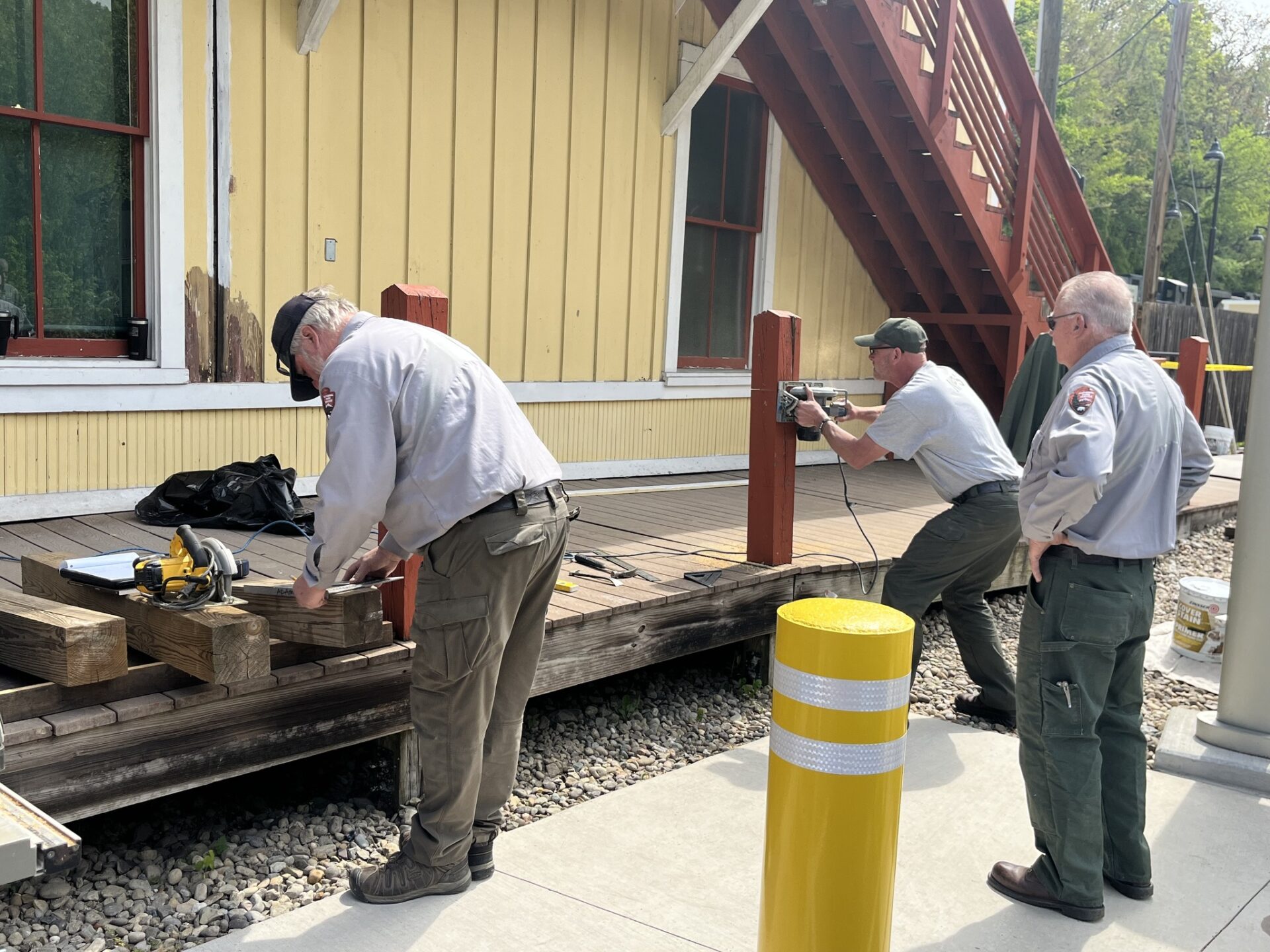A group from the National Park Service’s Historic Preservation Training Center is working with staff at the New River Gorge National Park and Preserve to restore its historic Thurmond Depot.
The building is an old railroad depot built at the beginning of the 20th century during Thurmond’s heyday as a railroad town. Its location on the main line of the Chesapeake and Ohio Railroad meant the depot became an entry point for regional business during the Industrial Revolution.
“In 1910, the Thurman Depot had more freight revenue than any other depot on the entire Chesapeake and Ohio Railroad; it served roughly 70,000 passengers in that time period, in its heyday,” Chief of Interpretation and Visitor Services Eve West said. “It was also a really important area just as a maintenance area for the steam locomotives.”
The Thurmond Depot was added to the National Register for Historic Places in 1984 before reopening as a visitors center for the National Park a decade later, in 1995.
The restoration of the depot doubles as a workforce training program. The national initiative, called the Campaign for the Historic Trades, helps train park workers on how to best preserve historical buildings.
“One of our mandates, of course, is to preserve the natural scenic objects and historic objects as well,” West said. “This is part of what we do in the National Park Service just to keep these stories alive.”
The program began preliminary upkeep on the structure as part of the training, which included the preservation and repair of windows, doors and wood siding. Old paint was also scraped off and replaced with a new coat, in keeping with its historic appearance.
“We have just barely scratched the surface of learning how to do things now,” West said. “And so we’re gonna continue on and put some of those new skills to action.”
The first phase of training is complete and restoration work will continue throughout the summer and fall.
The Thurmond Depot is open to visitors Memorial Day through Labor Day.
